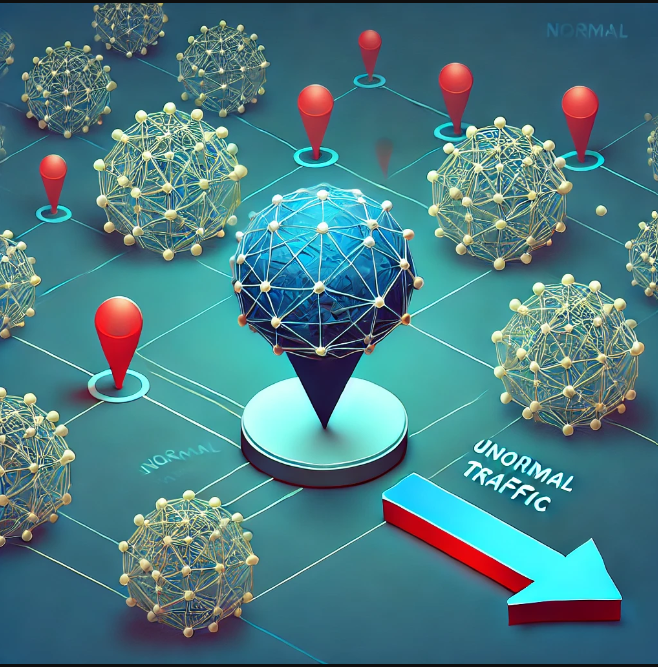
Introduction
In today’s data-driven world, anomalies – those unusual data points that deviate significantly from the norm – can be indicators of fraud, system failures, or even groundbreaking discoveries.
But how can we effectively identify these anomalies amidst massive datasets?
Enter the k-Nearest Neighbors (KNN) algorithm, a versatile tool that’s gaining traction in the field of anomaly detection.
The Essence of KNN
At its core, KNN operates on a simple principle: birds of a feather flock together.
Given a new data point, KNN looks for its ‘k’ closest neighbors in the existing dataset.
The distance between data points is often calculated using metrics like Euclidean distance or cosine similarity.
KNN for Anomaly Detection – The Intuition
In the context of anomaly detection, KNN shines because anomalies, by definition, are ‘lonely’ data points.
They are far away from their neighbors in the data space.
Hence, if a new data point has a large average distance to its ‘k’ nearest neighbors, it’s flagged as a potential anomaly.
Illustrative Example: Detecting Anomalies in Network Traffic

Let’s dive into a practical example to better understand KNN’s role in anomaly detection.
Imagine you’re monitoring network traffic.
Most of the data points represent normal activity, clustering together as expected.
However, at some point, you notice a sudden surge in traffic originating from an unfamiliar IP address.
This spike in activity is unusual and doesn’t fit the typical pattern.
In this scenario, KNN would quickly detect this anomaly by assessing its distance from the rest of the data points.
Since this spike is far removed from the normal activity clusters, it is flagged as an outlier.
The algorithm helps ensure that these isolated and potentially risky behaviors don’t go unnoticed.
This offers a way to respond to potential threats, such as unauthorized access or security breaches, in real-time.
By identifying and isolating this unusual data point, KNN aids in safeguarding your network by highlighting suspicious activity that deviates from the norm.
Advantages of KNN for Anomaly Detection
- Simplicity and Interpretability: KNN is easy to understand and implement, making it a great starting point for anomaly detection.
- Non-parametric: KNN doesn’t make any assumptions about the underlying data distribution, making it suitable for various types of data.
- Adaptability: KNN can handle both numerical and categorical data, expanding its applicability.
Navigating Challenges
- The Curse of Dimensionality: In high-dimensional spaces, the concept of ‘distance’ becomes less meaningful, impacting KNN’s performance. Dimensionality reduction techniques can help alleviate this.
- Choosing the Right ‘k’: The value of ‘k’ can significantly influence anomaly detection results. Too small a ‘k’ might lead to false positives, while too large a ‘k’ could miss subtle anomalies.
Cutting-Edge Research in KNN for Anomaly Detection
- Hybrid Models: Researchers are combining KNN with other techniques like clustering or deep learning to boost anomaly detection performance.
- Adaptive KNN: Instead of using a fixed ‘k’, adaptive KNN algorithms dynamically adjust the value of ‘k’ based on the local density of data points, leading to more accurate anomaly detection.
- Anomaly Detection in Streaming Data: With the rise of real-time data streams, researchers are developing KNN-based methods that can detect anomalies on the fly.
Conclusion
KNN’s inherent simplicity and versatility make it a valuable tool for anomaly detection across diverse domains.
From fraud detection in financial transactions to identifying equipment malfunctions in industrial settings, KNN continues to prove its worth.
Ongoing research is further enhancing KNN’s capabilities, paving the way for more robust and efficient anomaly detection systems in the future.
Stay tuned to my blog for more insights into the exciting world of machine learning and data science!
Feel free to connect with me on LinkedIn to discuss the latest trends and developments in anomaly detection and KNN.
